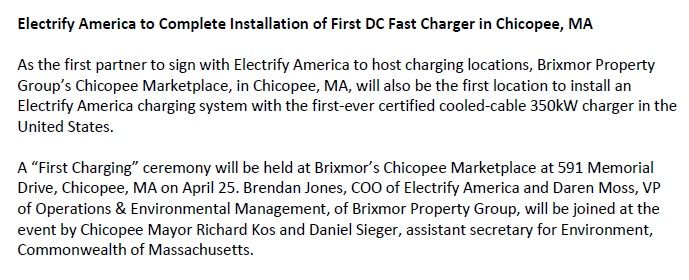Maybe it’s the charging location that gets passed over if you have a large enough battery pack...As a resident of VA... " a corner parking area of a large rural Exxon station known as Brugh’s Mill Country Store in Fincastle, Virginia just off US-81 about 20 miles north of Roanoke." is ... uhh... an "interesting" choice for one of the first locations.
It does look rather isolated but is either relatively new or well maintained. It has a restaurant of sorts with something more than hot dogs spinning on steel rollers although it looks like nobody is eating there when they took the photos:



